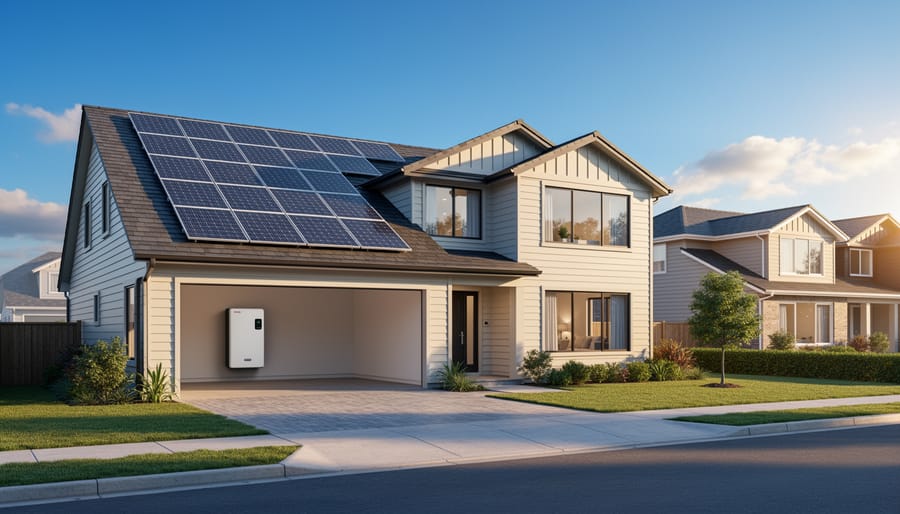Solar Landscape Lighting Ideas
Updated:

Solar landscape lighting ideas can make the environment more attractive. Adding solar light bollards to a walkway, up lights under trees, underwater lighting in pools and water features, or LED strips under steps can turn the most mundane outdoor space into a wonderland.
And the value of landscape lighting extends beyond the obvious aesthetic appeal. A well-lit outdoor space is safer with fewer trip and fall risks. It’s also more secure, offering a far less attractive target for burglars while optimizing the efficacy of CCTV systems. Not only that but using low-voltage solar lights makes your garden safer.
Lighting driveways, paths, and steps with lanterns or bollards make them safer at night and lead the eye through the area. Disc lights-focused spotlights and floodlights do a great job illuminating artificial and natural garden features, particularly statues or sculptures, home facades, and trees.
Water features and swimming pools are great landscaping features on their own that are taken to the next level when tastefully lit at night, especially if submerged solar lights are used.
It’s the specialty lighting market, however, where the fun begins. From illuminated ball planters, rock lights, and tiki torch lights to simulated flame lanterns and brick lights, your imagination has unlimited space to play.
And all powered by nature’s unlimited, free solar energy source.
Amping Up Your Solar Landscape Lighting
High Traffic Areas: Solar Path Lights and Driveway Lighting
Areas of your garden space that see high vehicular or foot traffic require specific lighting techniques, such as paths and driveways. It would be best to light up these areas so that obstructions on the travel way and kids or pets approaching from either side are visible.
When lighting a walkway or driveway, solar lantern or bollard lighting are commonly used and effective solutions. However, to create an aesthetic punch while achieving the desired practical effect, you need to balance the placement of the solar lights.
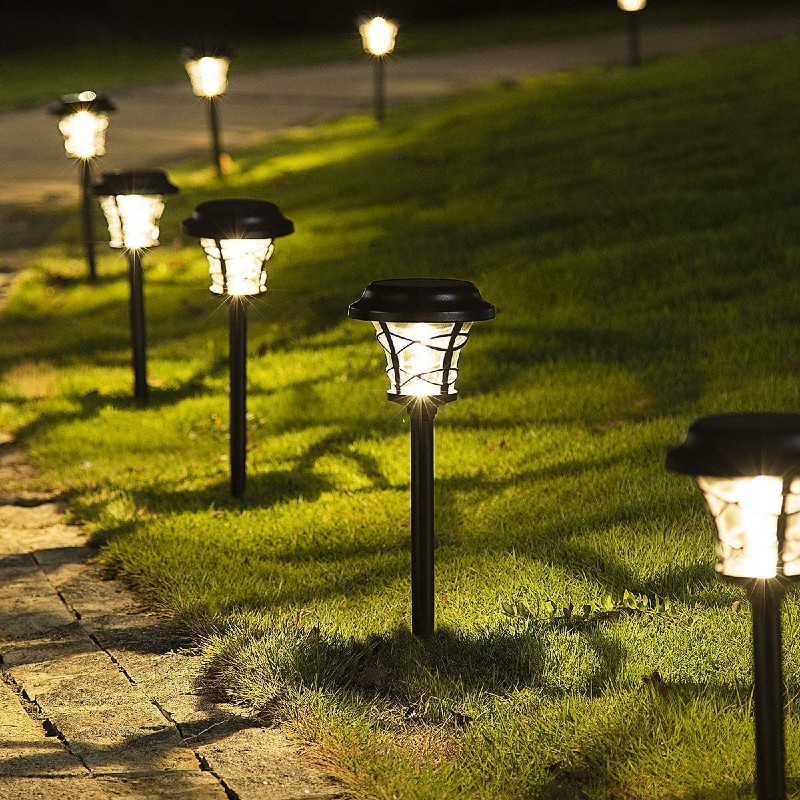
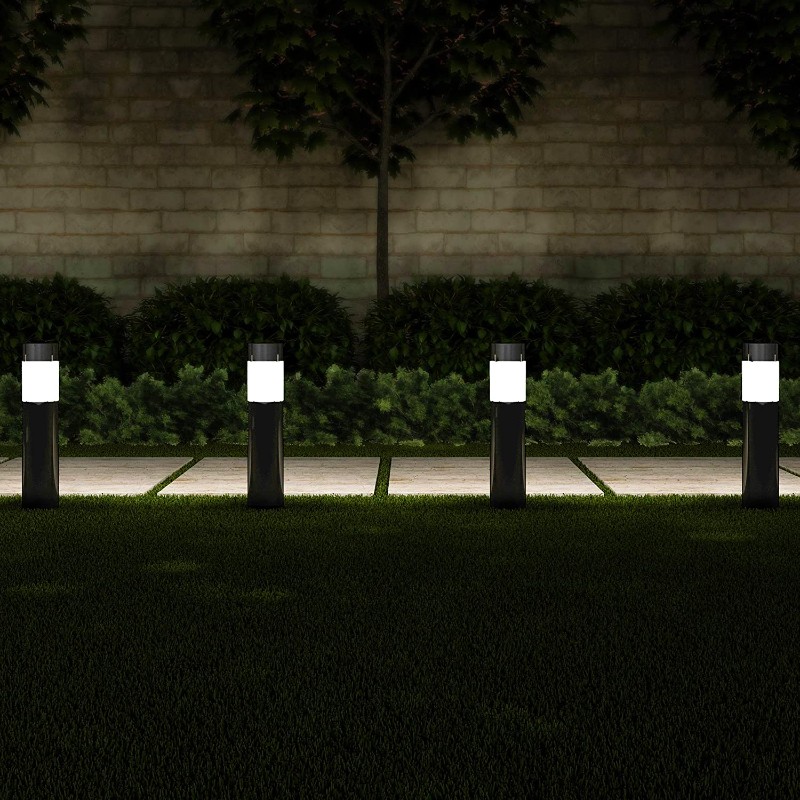
Resist the temptation to place path lights regularly and along regimented lines. This creates the “good little soldier” or runway light effect. While effective, it can kill the overall aesthetic effect. Space the lights more informally and move lights on turns a bit further away from the path.
This breaks up the overall scheme regularity creating a more natural, organic lighting effect while maintaining the core safety objective. Another great way to add appeal to your path lighting is alternate fitting designs along the path run. For instance, an alternating combination of square and round solar path lights gets the job done and makes the lighting less regimented and more interesting.
When installing path lighting, choose fittings that have enclosures designed to cast attractive patterns on the ground. This is a great addition to the overall aesthetic effect of the path lighting.
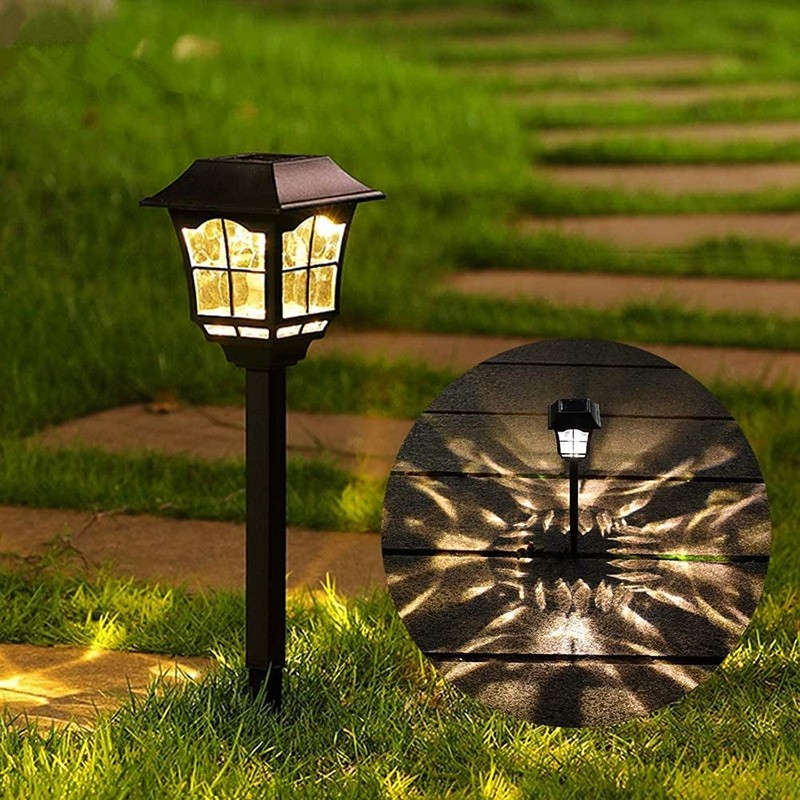
Building Facades
Solar spots and floodlights are the weapons of choice for facade lighting. Lights in the warm yellow/orange 2,000 Kelvin output range are preferable for building lighting. You can opt for floodlighting or solar lamp posts to create a soft, wide-area illumination or a more focused spotlighting effect for specific building features. In general, a combination of the two will deliver the best results.
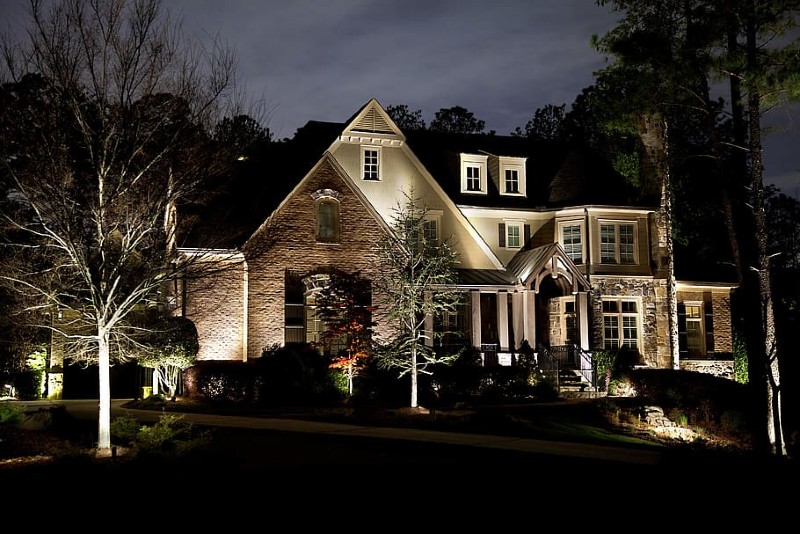
If you choose to spotlight specific areas of your home’s facade, direct up or down lighting is often the most effective choice. Utility areas such as outside ablution facilities, storage rooms, and sheds are best lit inside and out with purpose-designed bulkhead, ceiling mount, and lampost lighting.
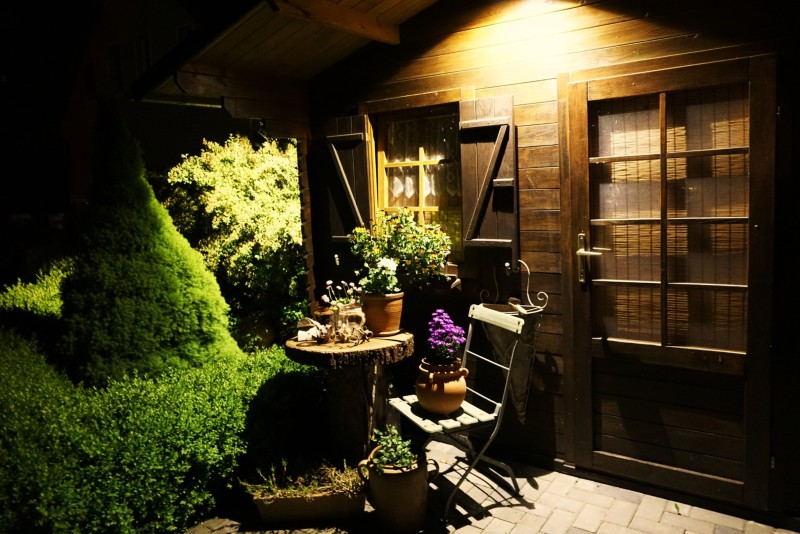
Statues and Man-Made Features
The facade lighting principles also apply to statuaries or other built-in garden features. Statues, fountains, gazebos, or any other man-made features benefit from focused spots or floodlighting. They deserve attention, so try to isolate them with focused lighting to stand out from the rest of the surroundings.
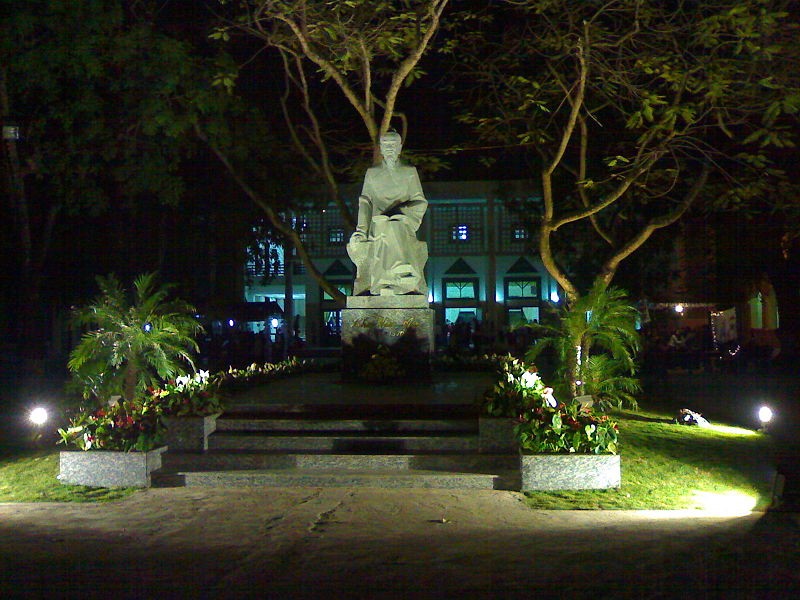
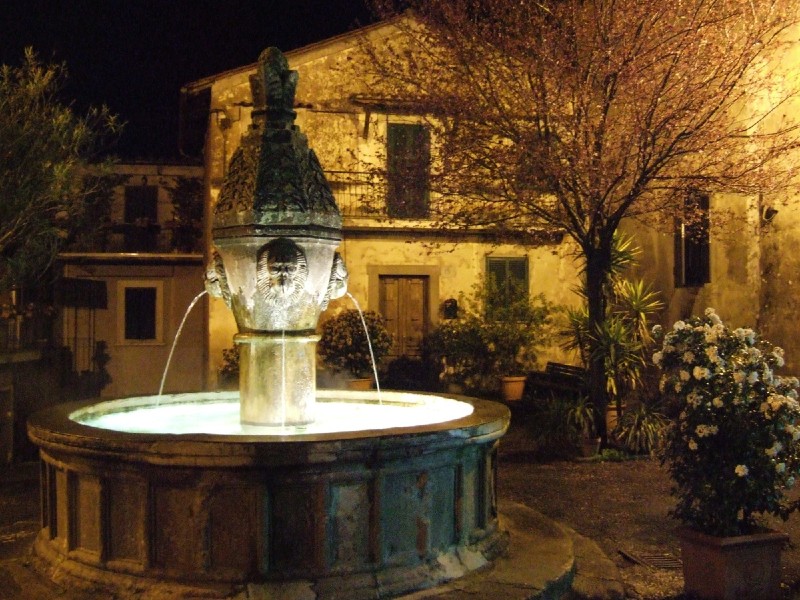
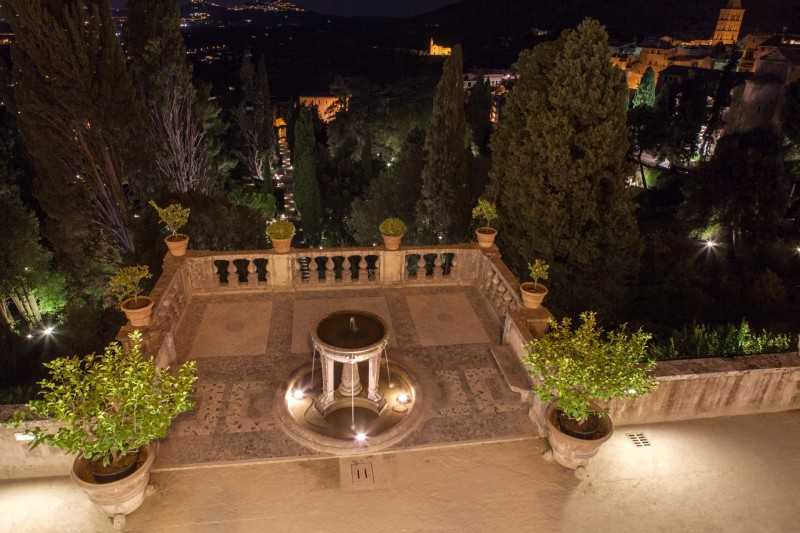
Plant Features
The landscape features that make for some of the most striking lighting subjects are nature’s own. Beautifully manicured lawns, flower beds, borders, and huge trees require artistic lighting.
As with manufactured features, tall trees should be up-lit with disc, spotlights, or floodlights. Beds and borders are best lit with lanterns, bollards, or suspended lighting. Large areas like lawns require high-level floodlighting to get the best results.
Moonlighting
Moonlighting is a technique of downlighting where light fittings are suspended high, typically 30 to 40 feet, above the ground in trees or on structural elements. This creates soft, diffuse wide-area lighting similar to natural moonlight. Moonlighting is a great way to add subtle lighting and great ambiance to dining areas and striking illumination of groups of trees with large canopies.
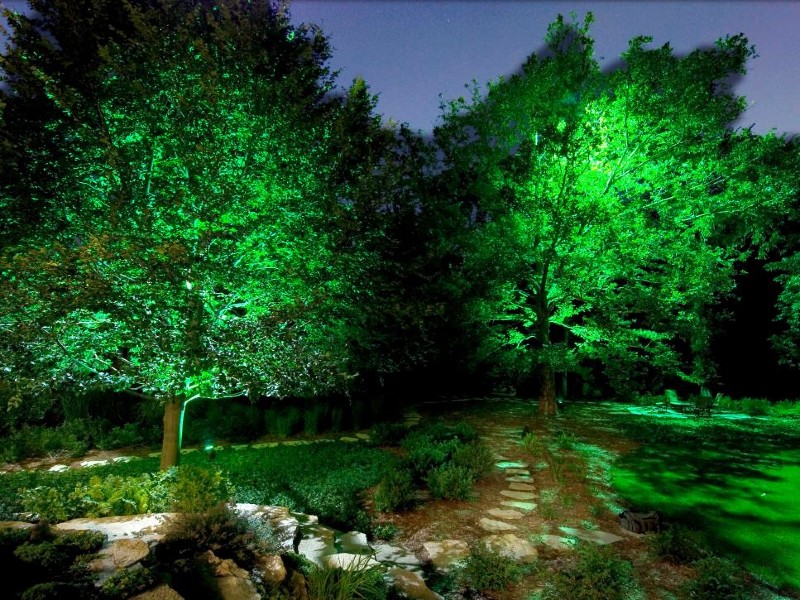
Water Features and Swimming Pools
Water features, whether static or moving, are excellent lighting subjects. A well-lit swimming pool is not only a thing of beauty on its own but also cast mesmerizing patterns on walls and structures around it.
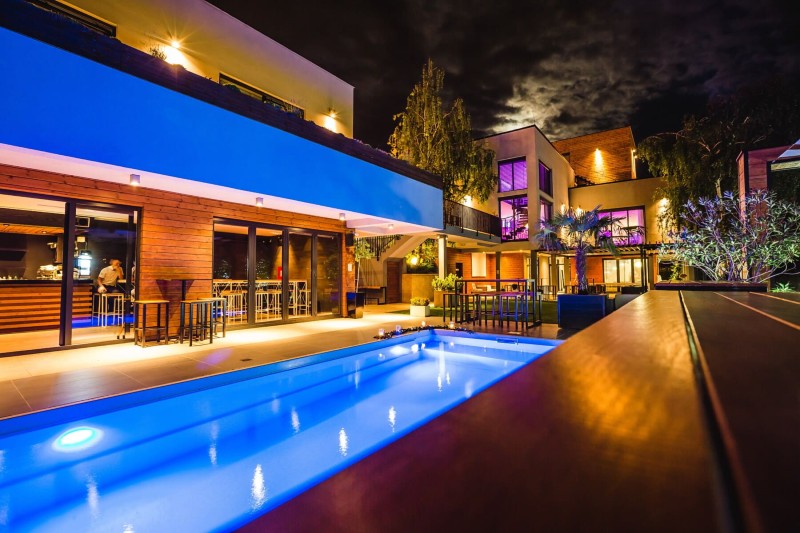
Moving water, such as mini-waterfalls, can be front-lit by spotlights or from above or behind the fall of water to create striking effects. Koi ponds that have disc lights or lanterns installed around their circumference are equally impressive features. Submerged lighting also adds massive appeal to any water feature, no matter how small.
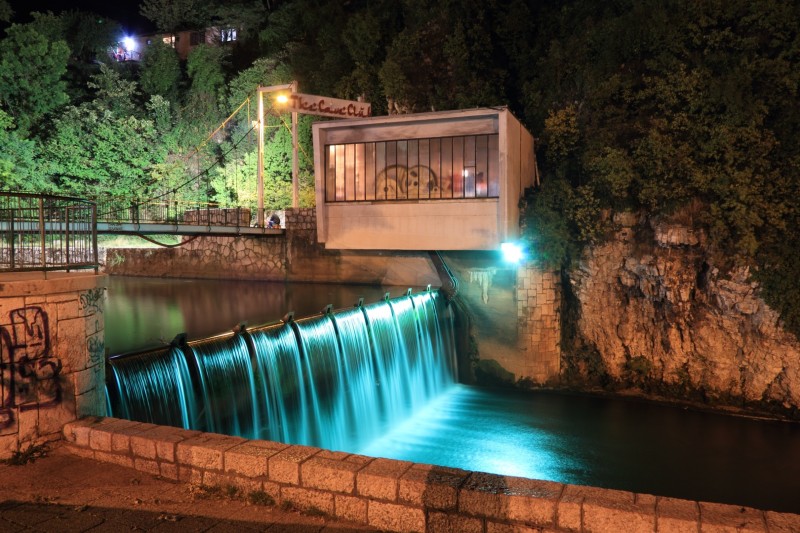
Social Focal Points
Fire pits, gazebos, barbeque stations, and el fresco dining areas are generally the subject of much design attention and should be highlighted as landscape features.
Nobody wants to enjoy a cozy open-air meal or a quiet visit with friends in the equivalent of a theater’s center stage. These building features should be lit in such a way as to accentuate their presence without blinding their users or robbing the moment of privacy and intimacy.
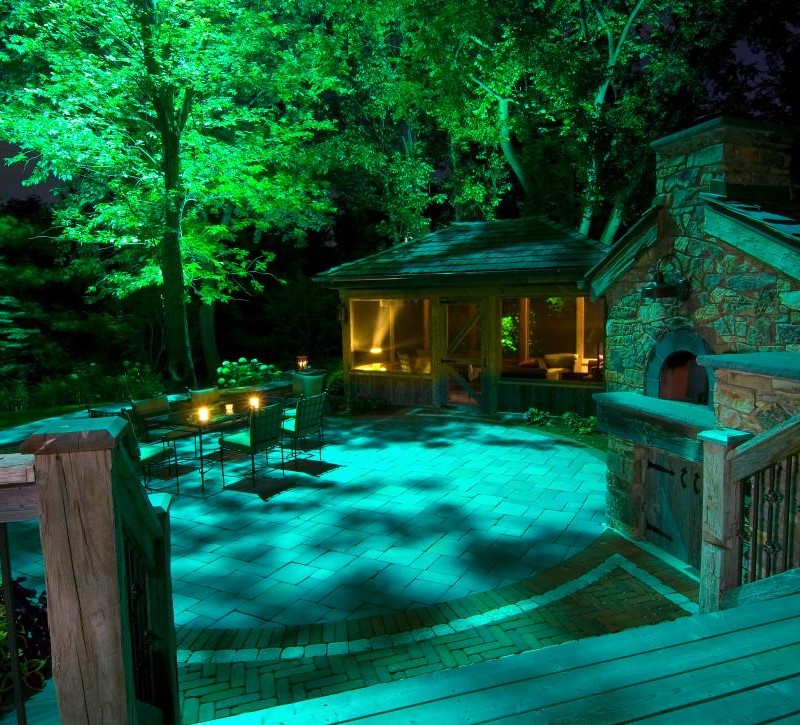
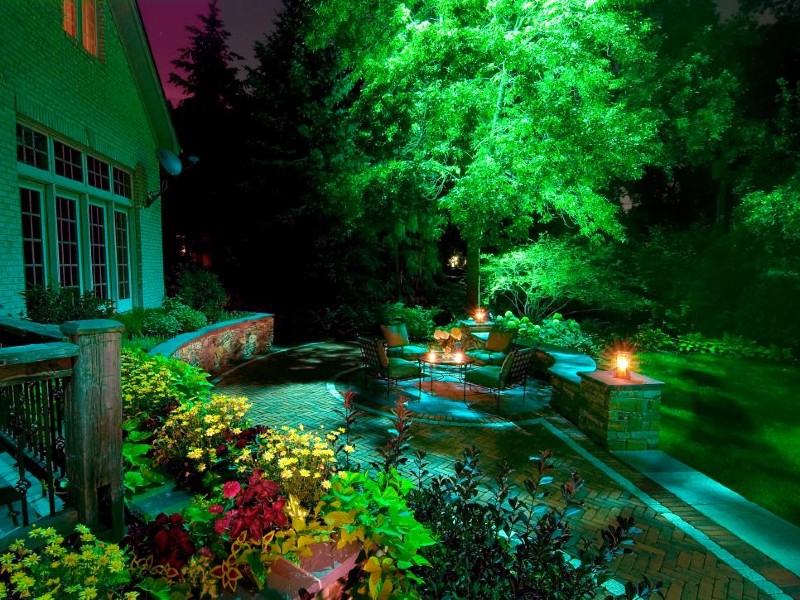
One of the best ways of creating an aesthetic impact while maintaining privacy and intimacy is to go high with the lighting. Areas lit from above remain well illuminated but maintain a cozy appeal. In addition, tables, walkways, and walls can be graced with low-intensity solar lights to add to the romance and magic.
Stairways, Steps, and Lip-Lighting
Stairways and steps are generally part of the high-traffic classification of landscape features. Illuminating these areas is as much about eliminating dangerous low, visibility situations as it is about aesthetic appeal.
Step area illumination needs to be carefully considered before installing the lights. When the only lighting source is step lights, it’s easy to create pools of deep shadow, as illustrated below. This can be a real problem with riser-mounted lights on wider stairways.
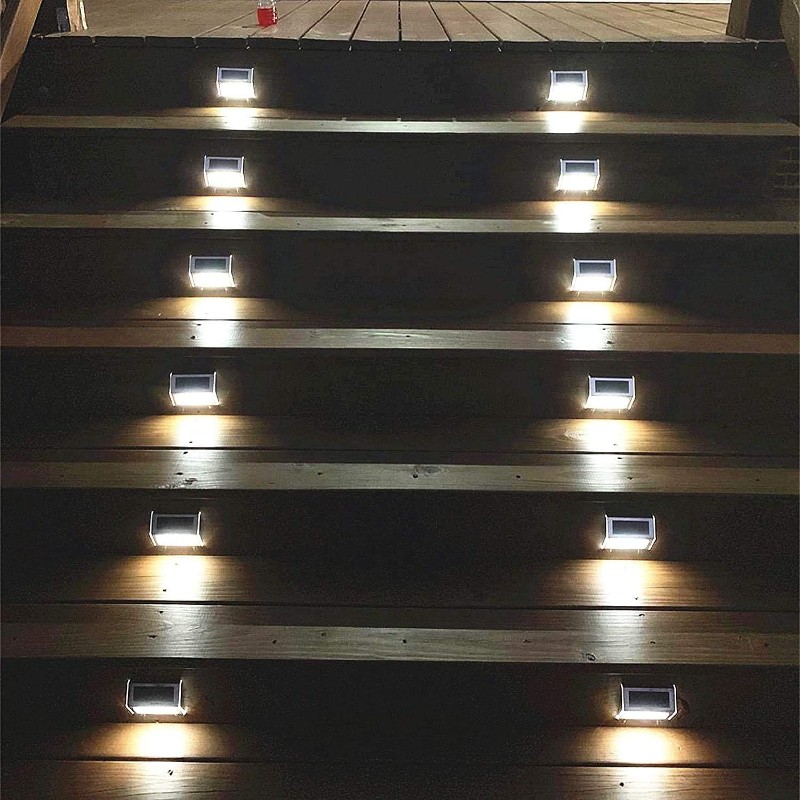
In this image, the same solar step lights have been used but are mounted on the sidewall of the stairway. This gives a better spread of light while retaining the aesthetic appeal.
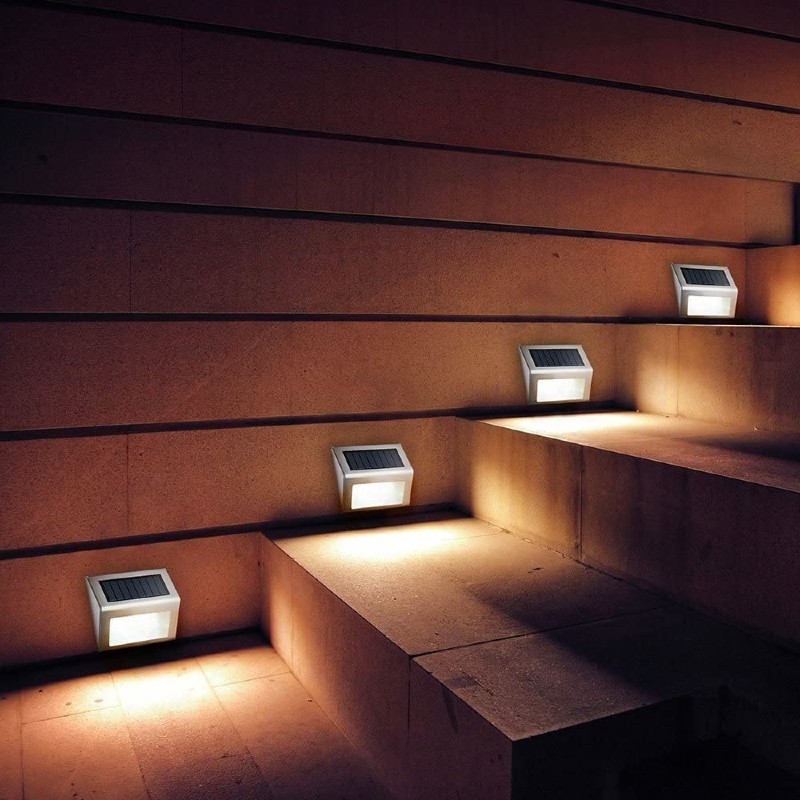
Using LED strip lighting under the lips of the steps is one of the best lighting stairs. The strips can hang together or cut to length to span the entire tread width. They throw their light directly down onto the step below give an even illumination of the whole area.
The same effect can be achieved with hardscape retaining wall fittings. Swivel LED heads are particularly effective because you can adjust the lighting direction to cover the step area completely.
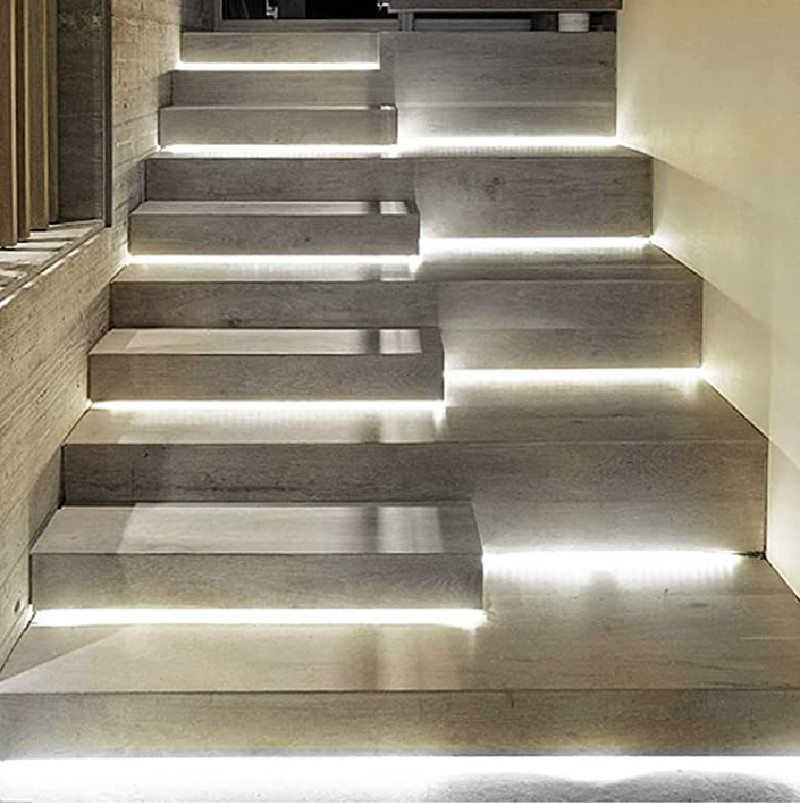
If the steps have low balustrade walls and pilasters or short columns at the top of the run, it’s tempting to place a light on top of the column. Be cautious about doing this, as it can also cast shadows on the step surfaces and do more harm than good. A general rule of thumb is to use a combination of step or wall lights and ambient light to illuminate stairways properly.
Hardscape Lighting
Hardscape lighting is any lighting mounted on hardscape or built-in, man-made structures in the home or garden. For instance, mounting under a stair lip or installed in a wall or walkway.
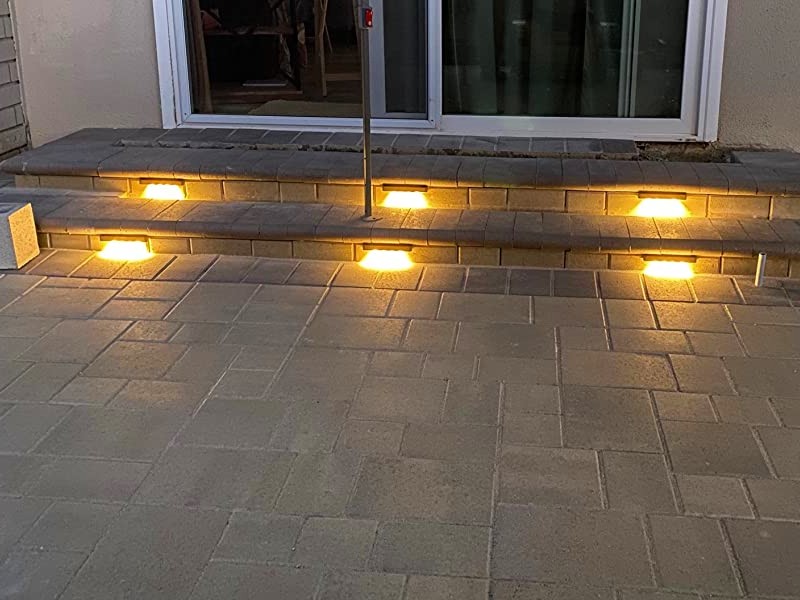
Although hardscape fittings are hard to beat in terms of aesthetic appeal and practical versatility, they can be tricky to install. Often walls and structures will have to be chased or drilled through to accept cables. Existing bricks will have to remove to make way for the fitting in the case of flush-mounted brick and wall lights. Although this is not impossible, installing hardscape lighting during construction is certainly easier.

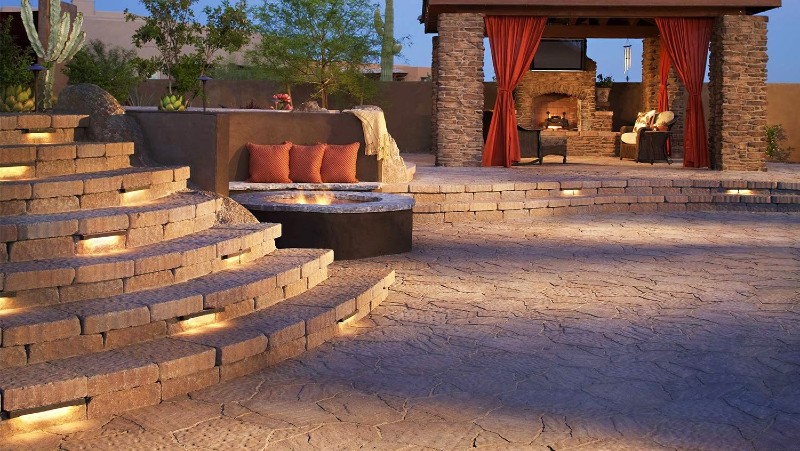
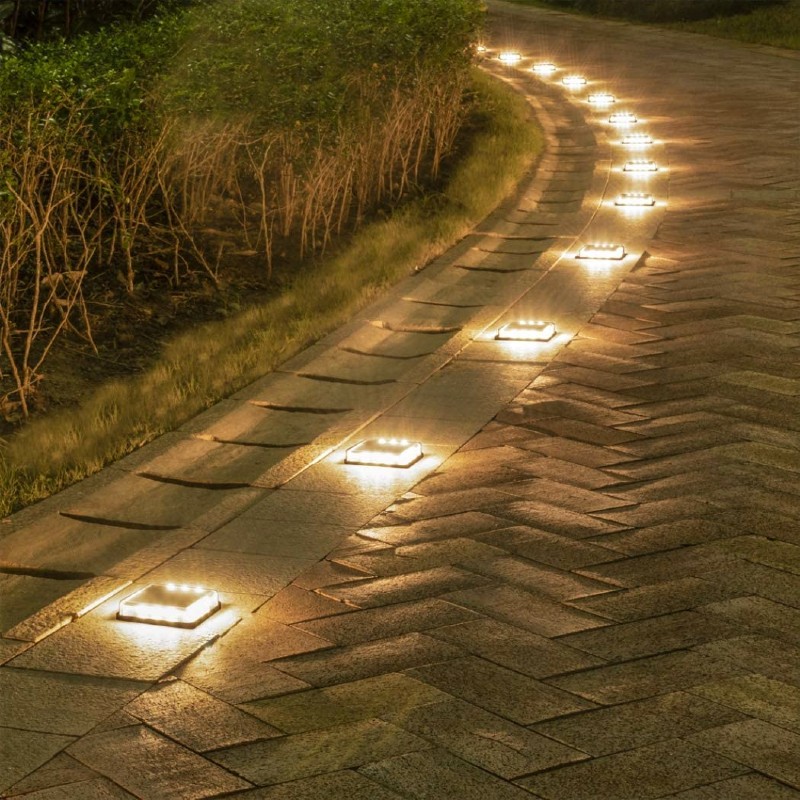
Artistic Brownie Points
To give that extra ultra-edgy character to your solar landscape lighting, you must let your inner artist roam free. There are so many cool, low-cost techniques for getting awesome landscape lighting effects with colored filters, color-changing luminaires, and even a bunch of household items as well.
Color and Texture
Color filters for outdoor lighting can work wonders in the aesthetic arena. Amber, brown, and yellow filters enhance skin tones and create a warm, inviting aura in social areas. Cooler blue filters, particularly the lighter blues, enhance foliage color and add great depth to plant lighting.
If you need to go low-tech, something as simple as directing a solar spotlight through a mason jar full of colored gel balls creates a kaleidoscope color wash on garden features. The same spotlight bounced off a sheet of crumpled tinfoil will illuminate adjacent features with an attractive, dappled reflection.
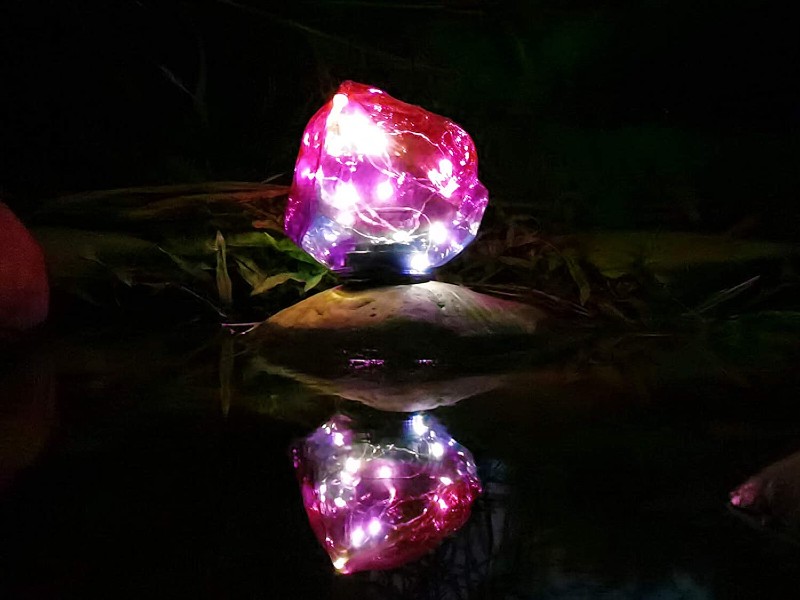
Can produce beautiful effects by projecting focused light through a sheet of frosted glass or patterned and colored glass bricks.
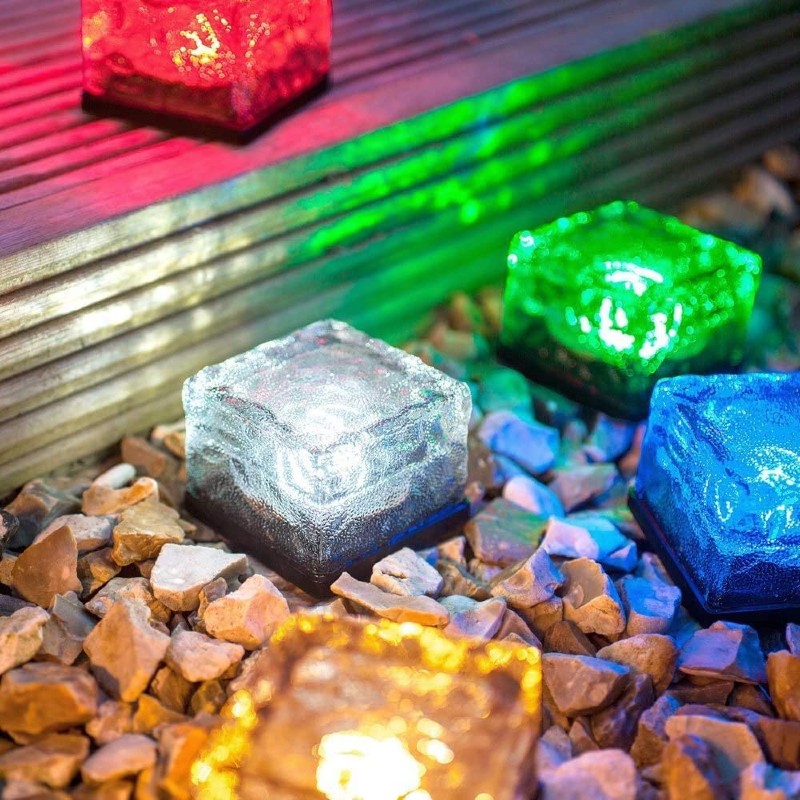
Fairy and String Lights
String garden lights and solar fairy lights are another great way of adding an element of romance and mystique to landscape lighting. String or rope solar lights are available in many lengths and colors and are easy to install.
One of the basic rules when you hang string lights or fairy lights is to avoid regimented layouts. Informally drape the string lights across plants, landscape fixtures, or the hardscape to create magical yet effective lighting effects.
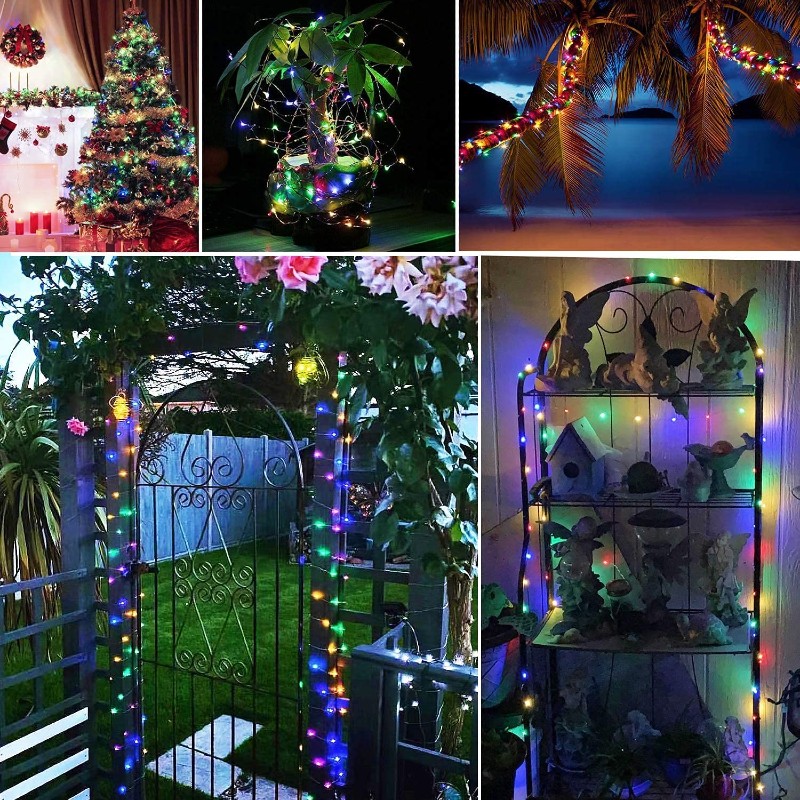
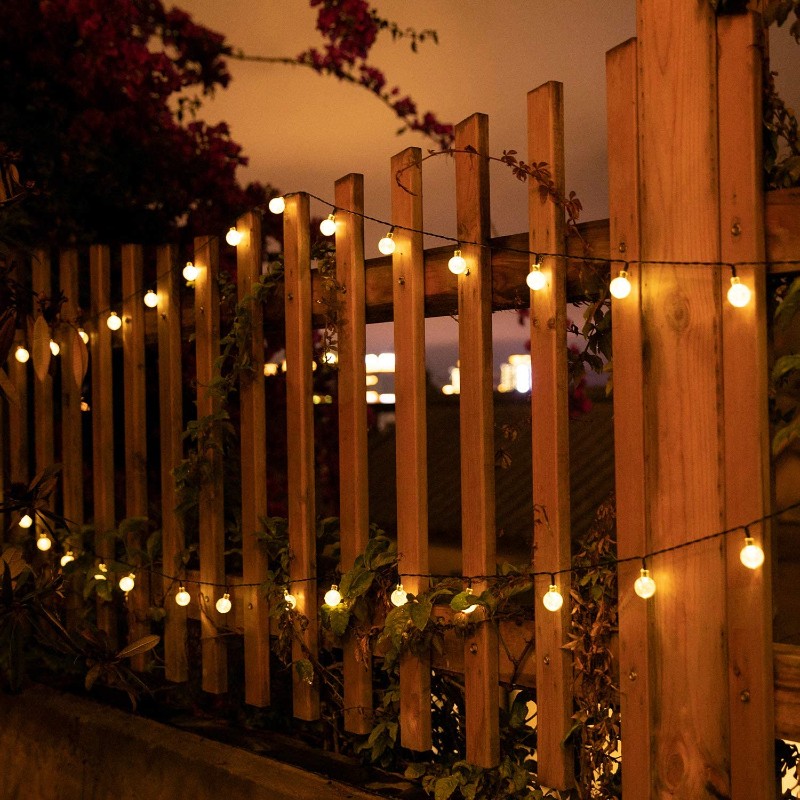
Stand-Alone Solar Lights vs. A Dedicated Solar Panel System
Anyone considering solar landscape lighting can use stand-alone fittings only, install a dedicated solar system with its own solar panels and batteries, or tap into an existing solar setup. Each choice has distinct benefits and downsides.
Stand-Alone Solar Light Fittings
Pros
- Low cost. The overall cost of several stand-alone solar garden lights can be substantially lower than installing a dedicated solar lighting system.
- Flexibility and ease of installation. Without rerouting cables, installing solar lights are much easier than hard-wired fittings.
- Low efficiency. The light output of stand-alone solar lights is often insufficient to last through the night with total power production.
- Location limitations. For these fittings to charge sufficiently, locations that receive maximum direct sunlight that need to place.
A Dedicated Solar Lighting System
Pros
- High efficiency. Running your landscape lighting off a large-scale solar system is a lot more effective and efficient.
- Large scale capacity. If your landscape lighting needs are extensive and complex, using a dedicated solar system for the lighting scheme is the way to go.
- Large range of fitting choices. If you power your landscape lighting from a single dedicated source, you can use just about any exterior light fitting with the right LED bulbs.
- Zoning capability. Drawing your landscape lighting power from a single source allows for remote zone control of different areas of your garden lighting.
Cons
- High cost. Even if you have an existing solar system in your home, the additional cost of cables and their installation will hurt the budget. The long-term benefits do offset the cost, though.
- Less light placement flexibility. Compared to stand-alone fixtures, installing lights are more difficult to move.
- High voltage risks. If you use power from the inverter to power some or all the lights, you’ll run the same high voltage risks as you would with a mains grid system.
In Conclusion
With suitable lighting methods, you can quickly elevate your home’s landscape lighting from a drab backyard feature to a focal point of its character. The advances in solar lighting technology make it easier, safer, and more affordable to achieve this ideal. We hope this guide has given you some inspiration to go out and light up your corner of the world!








